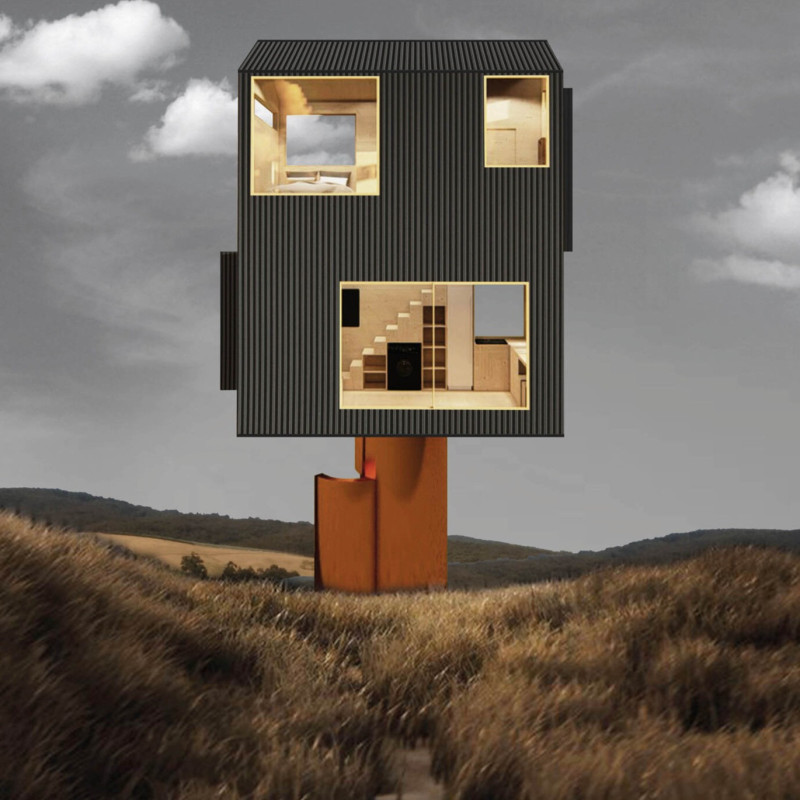5 key facts about this project
Unique Structural Design Elements
The design of the "Pole House" incorporates several distinctive features that set it apart from conventional residential structures. The elevated foundation enhances flood resistance while allowing air to circulate beneath the living space. The use of timber for the framing and wall construction offers a warm aesthetic, while corrugated metal cladding on the exterior provides durability and low maintenance demands. This combination of materials creates an overall visual cohesion while addressing practical considerations for environmental sustainability.
The house's compact layout includes flexible living spaces, including an adaptable living room, a dedicated work area, and a versatile sleeping space. This design allows inhabitants to modify their environments according to their varied needs, promoting a practical yet functional approach to daily life. Additionally, the incorporation of solar panels and a rainwater collection system demonstrates a commitment to renewable energy and resource conservation.
Functional and Sustainable Features
The "Pole House" is designed to optimize natural light and ventilation through strategically placed windows, particularly north-facing openings that enhance daylighting without excessive heat gain. This careful consideration of natural resources not only improves the living experience but also reduces reliance on artificial lighting and climate control.
The project’s architectural layout is a testament to efficient spatial planning, where each area is designated for specific functions yet can easily be adapted for different uses. This flexibility supports a lifestyle that can adjust to the changing demands of its inhabitants.
For those interested in understanding the intricacies of the "Pole House,” additional exploration is encouraged. Reviewing the architectural plans, sections, and overall designs will provide further insights into the technical aspects of the project, revealing its innovative architectural ideas and commitment to modern living solutions.























